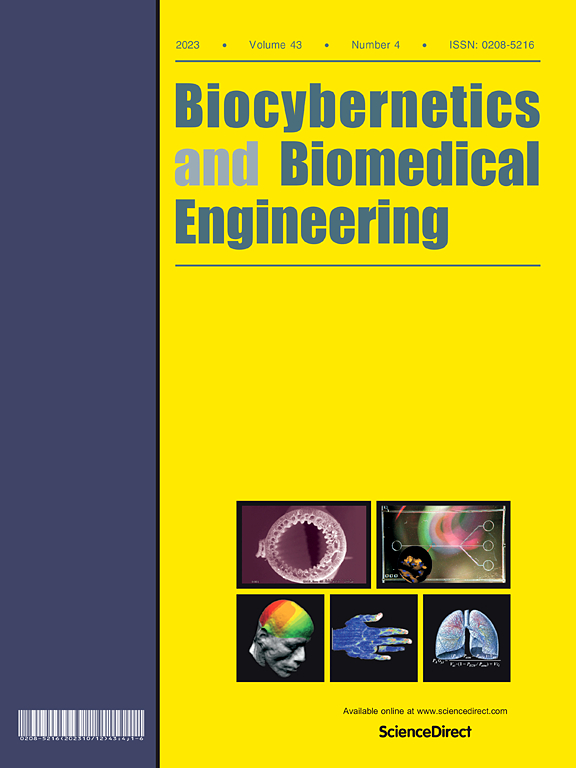Two state quasi-LPV dynamic model for gas exchange dynamics using the cycle-ergometer test
IF 6.6
2区 医学
Q1 ENGINEERING, BIOMEDICAL
引用次数: 0
Abstract
This paper presents a two state quasi-linear parameter varying dynamic model for gas exchange dynamics using the cycle-ergometer test. The obtained model, is based on the analysis of stationary and dynamic energy flow, and the method analysis, applies to both oxidative and glycolytic physical activities performed by an individual. The model parameters were identified by a power meter measuring the mechanical power at the pedal level on an ergometer bicycle (input signal), a commercial gas analyzer measuring the flow of oxygen uptake and the flow of carbon dioxide excreted (output signals), with data generated from two test protocols: a mixed protocol and an incremental cycling protocol. The model’s parameters are obtained in parts, from the measurements taken in the oxidative stage, the glycolytic stage, and the transition stage between the two, using the mixed protocol. The resulting model is validated using data from the incremental cycling protocol of nine individuals: six males and three females. The validated models obtained an accuracy of above 84.8% for the flow of oxygen and 89.1% for the flow of carbon dioxide. The dynamic model could be used to aid in creating personalized physical exercise programs for overweight individuals, simulating training plans within the operational thresholds of the human body or in structuring high performance training for athletes.

基于循环工力计试验的气体交换动力学的两态准lpv动力学模型
本文提出了一种基于循环工力计试验的气体交换动力学的两态准线性参数变化(quasi - LPV)动态模型。所获得的模型是基于静态和动态能量流的分析,以及V -斜率法分析,适用于个体进行的氧化和糖酵解物理活动。模型参数由测量计力计自行车踏板水平机械功率的功率计(输入信号),测量吸氧流量和排出二氧化碳流量的商用气体分析仪(输出信号)确定,数据来自两种测试方案:混合方案和增量循环方案。采用混合方案,从氧化阶段、糖酵解阶段和两者之间的过渡阶段的测量中获得了模型的部分参数。所得到的模型使用来自9个个体(6个雄性和3个雌性)的增量循环协议的数据进行验证。经过验证的模型对氧气流量和二氧化碳流量的预测精度分别达到84.8%和89.1%以上。该动态模型可用于帮助超重个体创建个性化的体育锻炼计划,模拟人体操作阈值内的训练计划,或为运动员构建高性能训练。
本文章由计算机程序翻译,如有差异,请以英文原文为准。
求助全文
约1分钟内获得全文
求助全文
来源期刊

Biocybernetics and Biomedical Engineering
ENGINEERING, BIOMEDICAL-
CiteScore
16.50
自引率
6.20%
发文量
77
审稿时长
38 days
期刊介绍:
Biocybernetics and Biomedical Engineering is a quarterly journal, founded in 1981, devoted to publishing the results of original, innovative and creative research investigations in the field of Biocybernetics and biomedical engineering, which bridges mathematical, physical, chemical and engineering methods and technology to analyse physiological processes in living organisms as well as to develop methods, devices and systems used in biology and medicine, mainly in medical diagnosis, monitoring systems and therapy. The Journal''s mission is to advance scientific discovery into new or improved standards of care, and promotion a wide-ranging exchange between science and its application to humans.
 求助内容:
求助内容: 应助结果提醒方式:
应助结果提醒方式:


